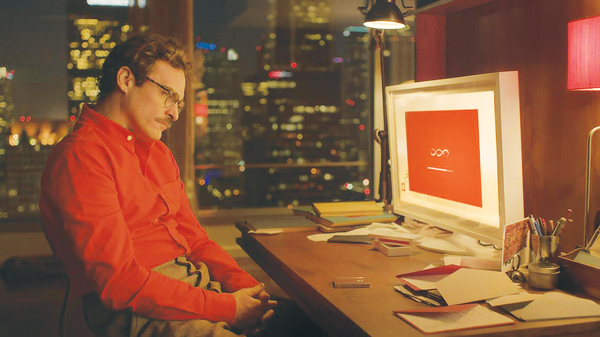From blockbusters to auteurs, 2013 delivered
BY SEAN EGAN | From a smattering of quality indie pictures to some big-budget spectacles to new work from celebrated auteurs and prestige pictures that actually delivered, there was something for everyone in 2013. The films were of generally high quality this year, making “best of” picks more a matter of personal preference than usual. With that disclaimer, I present, in descending order, my top twenty films of 2013.
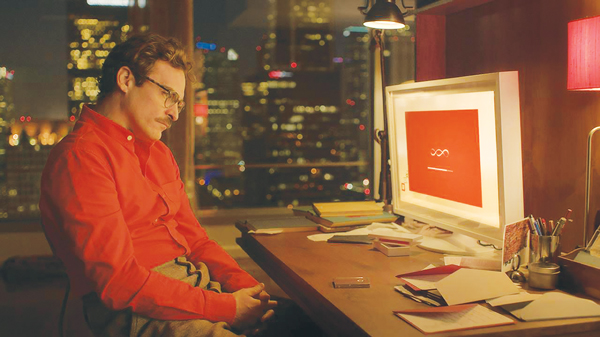
HER
Spike Jonze’s fourth feature film is ostensibly a romantic comedy. But as with everything the director’s done, nothing’s ever quite that simple. Set in the near future, Joaqiun Phoenix (delivering a performance as good as any in his distinguished career) stars as Theodore Twombly — a man who falls in love with Samantha, a highly sophisticated operating system with rapidly developing artificial intelligence (voiced by never-better Scarlett Johansson). It’s a concept that sounds crazy, if not too far-fetched — and Jonze treats his story, his characters and their emotions seriously. This being a Jonze film, it’s also wildly inventive visually, artfully shot and has an abundance of wicked bold ideas. What is most surprising, however, is how unabashedly, nakedly emotional it is. Certainly Jonze’s most immediate and affecting film to date, “Her” aims squarely at your emotional core, and hits both the belly laughs and the gut punches with impressive force. In every way, “Her” is thoroughly beautiful and, yes, human — and the year’s best.
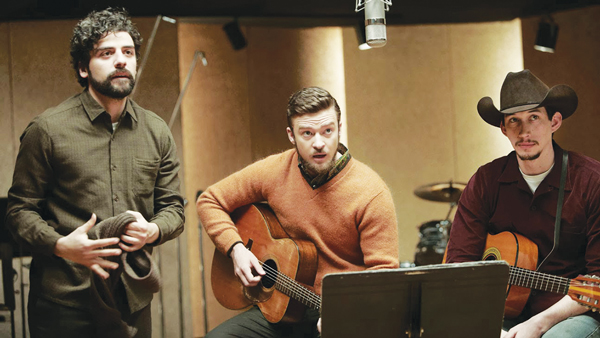
INSIDE LLEWYN DAVIS
The tale of the titular down on his luck folk singer plays out as a kind of amalgamation of aspects of many different Coen films. It’s got the somber atmosphere and dark comedy of “A Serious Man,” the icy wintertime cinematography of “Fargo” and the episodic shaggy dog structure of “The Big Lebowski” (and Walter Sobchack himself, John Goodman, in a standout supporting role). Most importantly, the Coens enlisted T. Bone Burnett (music supervisor for “O Brother, Where Art Thou?”) to provide the soul of the film by recreating the sounds of the New York Folk scene of the 60s. As much an examination of a complicated, prickly protagonist as it is a meditation on grief and the power of performance, “Inside Llewyn Davis” makes an excellent addition to the Coens’ stellar filmography.
BEFORE MIDNIGHT
This tense, raw, unfiltered look at how love progresses is the best entry in writer/director Richard Linklater’s “Before” series. The previous two (highly romantic) films chronicled the development of the relationship between Jesse and Celine (Ethan Hawke and Julie Delpy, also co-writers) over the course of the decade — while “Midnight” finds them nine years later, together and with kids. The draw of the film, as always, is the long, sparkling dialogues and the chemistry between Hawke and Delpy. Unlike the previous films, this one is dark — exploring the shifting dynamics of a long-term relationship in intimate, honest detail. Nowhere is this more apparent than during the back half, where the couple has an epic fight, hurting each other in the way that only those who love each other can. It’s a remarkable capper to Linklater’s modern-classic trilogy.
12 YEARS A SLAVE
Director Steve McQueen gives audiences a brutal, unflinching, painfully realistic look at the horrors of slavery in the United States. In doing so, he has started serious dialogues about race, history and representation in media. Based on Solomon Northup’s memoirs, McQueen’s adaptation is unafraid to dig deeper into this dark period of history — where other prestige pictures would be content to just look at the surface. Chitwetel Ejiofor anchors the film with a brilliant, nuanced performance, which provides the film with its aching, resilient heart — even as the psychological damage and bloodshed adds up to become near unbearable.
AMERICAN HUSTLE
David O. Russell’s crime movie proves that pulling off old tricks well can be just as bracing and exciting as playing the role of innovator. Set in the impressively recreated 1970s, it’s in the Scorsese-vein — but filtered through the modern-day screwball dialogue and character-based humor that has become the director’s calling card. Although the whole cast is stellar, Amy Adams’ seductive con artist deserves award nods. Bradley Cooper is hilarious as a neurotic FBI agent, in a role that should finally wash away the bro-tastic scent of the “Hangover” sequels for good. Clever plotting, witty banter and stylish direction make “Hustle” fun from start to finish, and arguably the best film of O. Russell’s career.
COMPUTER CHESS
In an indie scene increasingly dominated by manufactured quirk and the plight of listless twentysomethings, Andrew Bujalski’s earnestly weird and refreshingly original mockumentary is low-key, funny, smart and thought-provoking. Shot on vintage video cameras with a mostly non-professional cast, the whole movie plays out like a found-footage documentary of a 1980s computer chess tournament — that is, until it doesn’t. As the movie progresses, Bujalski mixes in liberal doses of Lynchian, existential dread and the surreal with the established deadpan style. The result is like nothing you’ve ever seen before.
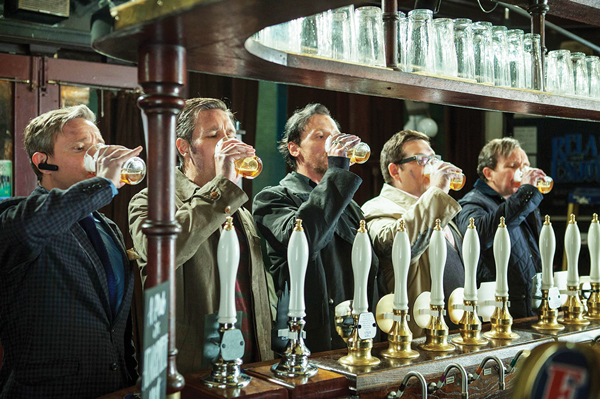
THE WORLD’S END
The final entry in director Edgar Wright’s so-called “Cornetto Trilogy” is a surprisingly emotional and bittersweet look at the effect of time on relationships the bonds of friendship. It’s also a sci-fi genre sendup that is seriously, seriously funny. Layering quick-witted banter, visual gags, physical comedy and perfectly timed callbacks — while also pulling back enough for emotional character beats — Wright’s direction is as stylized and confident as ever. Simon Pegg delivers the best performance of his career as Gary King, the confident but vulnerable burnout leading his old pals on a bar crawl. The sum of its parts would have more than qualified “World’s End” as a success — that it manages to synthesize itself into something greater than them justifies its inclusion on this list.
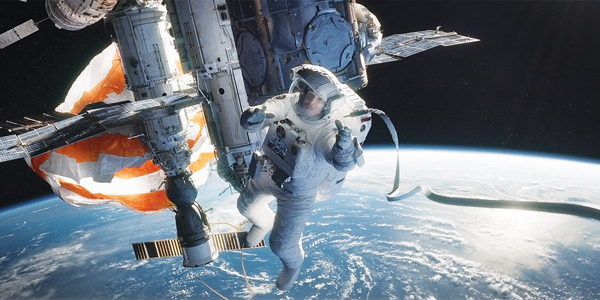
GRAVITY
Set in outer space, Alfonso Cuaron’s visually compelling marvel makes the case that the artistic potential of 3D can be stunningly realized, when its tools are placed in the hands of a visionary filmmaker. The setting allows Cuaron’s camera to roam totally freely, and lends itself to his signature absurdly long takes — such as the masterful, nearly 13-minute-long opening shot. At its core though, the film works as a highly entertaining, tightly wound action-adventure (which, at 90 minutes, never overstays its welcome).
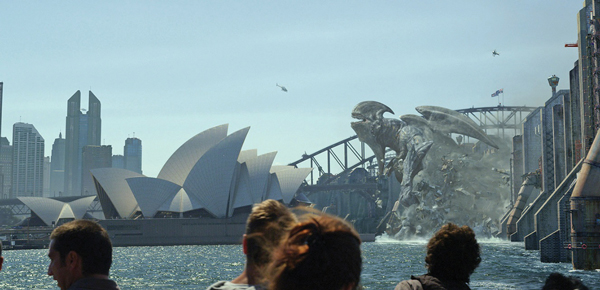
PACIFIC RIM
I’d be lying if I said “Pacific Rim” wasn’t the most fun I had at the movies in 2013 (and also if I said I saw it less than five times in theaters). In the midst of a grim blockbuster season, Guillermo Del Toro delivered the kind of spectacle people crave during the summer. This modern twist on the Japanese monster movie utilizes eye-popping 3D to enhance its super-sized robots-versus-monster fights. Sure, it might be easy to criticize the dialogue (admittedly dumber than a sack of rocks at times) and archetypical characters — but in doing so, you’d be missing the joys the film has to offer, and quite possibly the point. The expansive world building and the epic scale of its action sequences are what matter here, and the film more than delivers in that regard. Just try to watch its wildly inventive, frenetic, neon-colored Hong Kong fight sequence without a huge, goofy grin.
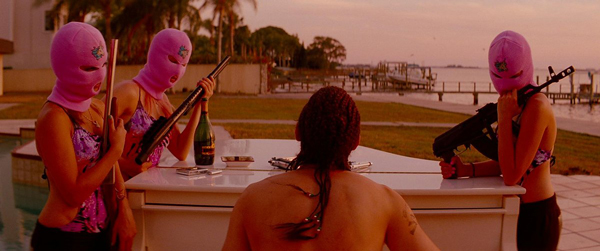
SPRING BREAKERS
Response has been sharply divided — but love it or hate it, this film is definitely not what audiences showed up expecting to get. Though the shrewd advertising campaign played up the “Disney Girls Gone Wild” angle, writer/director Harmony Korine has a history producing another kind of exploitation flick — the kind that plays at art houses and thumbs its nose at conventional filmmaking (see “Trash Humpers”). It’s no surprise, then, that “Breakers” turned out to be a beautifully shot dark comedy/morality play satirizing how hedonistic and desensitized the current generation is. Or maybe it’s just a dumb movie where James Franco, playing a hilariously over-the-top gangster, shouts about his collection of shorts and plays Britney Spears songs on an outdoor piano while the sun sets. No matter. This is one of the craziest, most unforgettable films of 2013.
THE WOLF OF WALL STREET
For his most recent crime epic, Martin Scorsese looks towards stockbrokers rather than gangsters, to create a hilarious dark comedy that doubles as a potent inditement of the financial world, past and present. With “Wolf,” he’s made an excessive film about excess, dialing up all of his stylistic tics to 10 for the three-hour running time, in an impressive feat of sustained directorial virtuosity. Equally impressive is the cast, headed by a hysterical Jonah Hill, and, most importantly, Leonardo DiCaprio — who plays real-life broker/criminal Jordan Belfort as a charismatic, Id-driven monster. It’s a vibrant, funny, shocking film that should not be missed.
BLUE IS THE WARMEST COLOR
The most surprising thing here isn’t the film’s controversial, graphic, depiction of a lesbian relationship — but how it dares to push the coming-of-age drama to new places. The three-hour movie chronicles the life of Adéle, from high school student to young professional, and her relationship with Emma, an artist. The expansive running time allows viewers to connect deeply with the characters, and show in detail the joy and excitement of first love — then, the profound heartbreak and pain that comes after it begins to wane and crumble.
PRINCE AVALANCHE
It’s easy to forget that writer/director David Gordon Green was once more “Criterion Collection” than “Apatown” — but this sweet, small-scale dramedy brings together both sides of the filmmaker. Following two mismatched construction workers as they repair roads after a giant forest fire, “Avalanche” features the disarmingly pretty photography, camerawork and bittersweet vibes of the Green of old, alongside a more nuanced version of the “bromantic” relationships and banter found in his recent movies (delivered here by Paul Rudd and Emile Hirsch). It’s a welcome return to form.
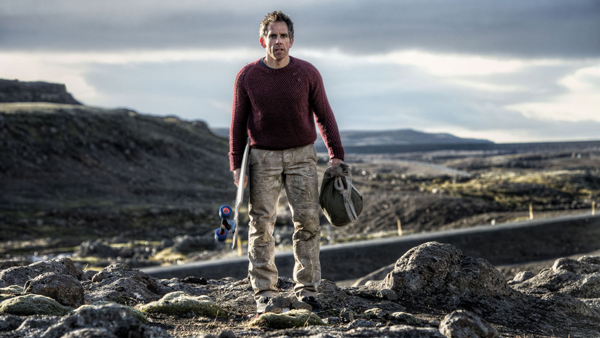
THE SECRET LIFE OF WALTER MITTY
In this uncynical, globetrotting remake of the 1947 Danny Kaye film (based on a James Thurber short story of the same name), star and director Ben Stiller infuses his tale of an average daydreamer with a distinct visual flair (just check out the gorgeous cinematography and incredible shots of Iceland and Greenland). It’s very sweet and charming — an exceedingly well-made, unabashed feel-good movie that rises above other Hollywood releases that have little to offer beyond their bland attempts to be “dark” and “gritty.”
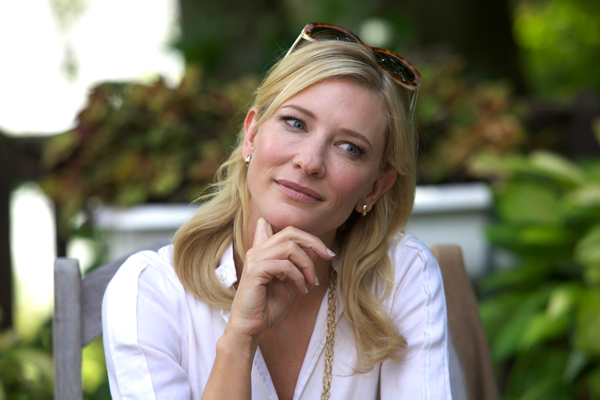
BLUE JASMINE
While the film rambles a bit (as all Woody Allen films do to an extent), the main draw of this modern-day “A Streetcar Named Desire” is Cate Blanchett, as Jasmine — and Allen, who excels in his exploration of territory far more dramatic than that of the director’s recent output. As the film’s Blanche DuBois figure, Blanchett delivers the best performance of the year — portraying a prickly, deeply damaged individual in an emotional, powerhouse display of acting.
THE CONJURING
Savvy, informed and extremely capable director James Wan has collected a bunch of seemingly worn-out clichés, and assembled them into the best, most exciting horror film of the year. Set in the ‘70s and based on the files of a real-life paranormal investigative couple, “The Conjuring” uses its old-school plot devices to craft a love letter to multiple genre tropes (possession! witchcraft! creepy dolls!). Wan keeps things fresh with a game cast, inventive camerawork and — most importantly — the knowledge that the power of suggestion can be more chilling than any amount of CGI.
FRANCES HA
Director/co-writer Noah Baumbach and star/co-writer Greta Gerwig have created a layered portrait of a young woman — and in doing so, have provided the sort of glimpse into the life of modern New York twentysomethings that HBO’s “Girls” only wishes it could. Shot in stylish black and white, it’s a low-key comedy of manners, surviving the city and the significance of friendships.
THE ACT OF KILLING
Joshua Oppenheimer’s documentary follows around the perpetrators of the 1965-66 Indonesian massacres, where hundreds of thousands of Communists were interrogated and killed by paramilitary leaders. In a unique twist, Oppenheimer allows these murderers to recreate the executions they carried out (as well as their thoughts/nightmares concerning them) for the camera, in the style of their favorite movie genres (gangster, western, musical, etc.). It’s visceral and disturbing — an insightful look into the effects of violence and evil on the collective and individual psyches.
WE ARE WHAT WE ARE
A moody, contemplative, horror film for adults, this tale of cannibalism and fundamentalism plays like a heady psychological drama for most of its running time — until the final section’s gory, bloody, disgusting spectacle. It’s far more disturbing than anything found in a mainstream horror film this year, and made all the more thematically satisfying by the character work preceding it.
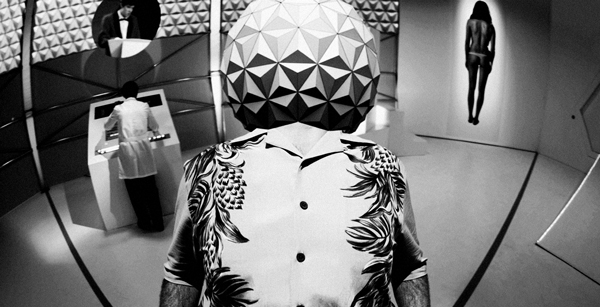
ESCAPE FROM TOMORROW
With much of its buzz centers around the controversial method of production, this film is more than worth watching on the merits of its content. A psychosexual dark comedy thriller of sorts “Escape” was shot less than legally, guerrilla-style, in Disney World. Concerning a father’s descent into madness while on vacation, there is only the vaguest outline of a narrative here, as increasingly unsettling, surreal vignettes are presented against the suitably eerie backdrop of the theme park (shot in distinctive black and white). While its totally bizarre nature and slow pace may not be for everyone, it’s hypnotizing for those on the same wavelength — a definite midnight cult film waiting to happen.



